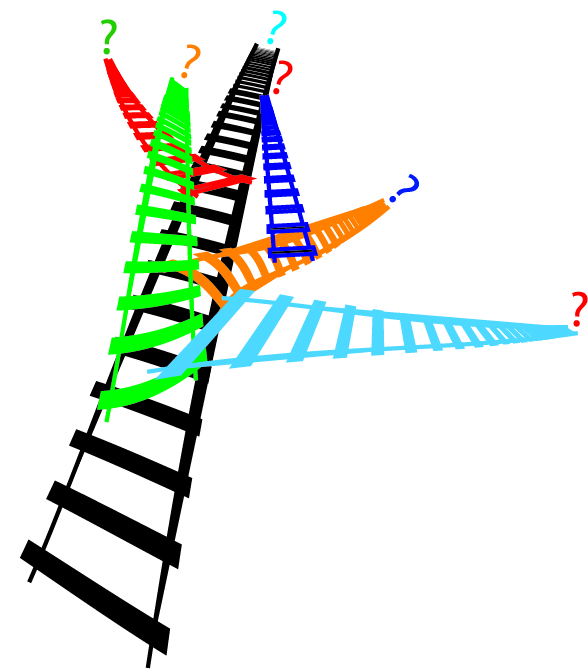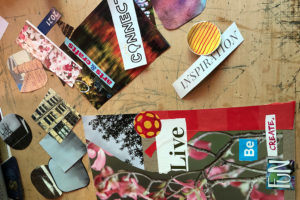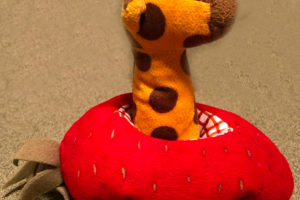Being creative is difficult. I have trouble settling on creative projects, working on projects, and finishing projects. My mind often becomes like tangled train tracks not knowing which direction to go or what track to follow.
This is how you do it: you sit down at the keyboard and you put one word
after another until its done. It’s that easy, and that hard.
— Neil Gaiman (b. 1960) English author of short fiction, novels, comic books, graphic novels, nonfiction, audio theatre, and films
Too Many Tracks
Ideas sparking around in my head and flowing through my brain aren’t invited, but rather show up unannounced and randomly. It can be a daunting task to figure out what these ideas want to be. They don’t tell me that. They ping around in my brain, compete with each other for my attention, and often come so quickly I can’t fully understand them. Sometimes they stop in mid-stream and say, “Oh, you can’t do this.” Or they may say, “This is too complicated to unravel to the eventual outcome.” My brain becomes like tangled train tracks leading nowhere, but at the same time everywhere. If I do see a destination, I am not sure which track to follow to get there. At that point I often become so confused that I stop and simply give up.
When ideas come, I write them down on scraps of paper and toss them into a box or drawer which contains “ideas.” Periodically I will reach in, pull out an idea, and work on it. I may write a song or an essay or a short story or include it in my unfinished memoir. There are many choices. And, that begins the dilemma. What is this idea? What does it want to be? Do I have to tell it what it is? Do I need to shape it into something? Ideas often can’t be forced. They have a life of their own. They even have voices of their own. Is it their voice or my own that quickly discourages me? It does not take long for my brain to become a messed up, confused, tangled train track.
Untangle the Train Tracks
How do you untangle the train tracks? Realize that even though the tracks look tangled and that they do cross over one another—each one has a beginning and a destination. You have to physically get on the track to see where it goes. The same with ideas and words. You need to sit down and begin writing them down to see where they are leading you. If you stop to look around to see the whole picture, you may become confused and believe there is no destination. Don’t look around and don’t doubt your writing process. Trust that there is a destination. Stay on the track. Stay on purpose. Wear blinders—at least for a short time if necessary—to block out any distractions or negative thoughts.
Another way to look at these words or ideas is to think of them as ponies. They enjoy being let loose into a field to play. They run, gallop, chase each other, frolic, and are carefree. Let them play and roam with no plan, agenda, or course. In the beginning let the ideas and words come freely. Of course, to do this you must first sit down and begin to write—or else, all the creativity remains in the air like ether or a vapor—amorphous, without shape, and without tangibility. When you begin writing, start with whatever comes to mind first. All the other ideas will get in line and wait their turn to be heard. Also, write without editing. Save that process for another time.
When I began writing every day and transferring thoughts into words it helped me follow the ideas (train tracks). Writing helps me travel through the maze. Putting ideas into a tangible form helps me to find the destination.
Focus on One Track
Creativity needs freedom, but it also needs singleness of purpose and focus. Focus is what keeps you on the right track. Write one word or note at a time and let it lead you through the tangled train tracks.
§
What projects have you completed after you committed to sit down and write word after word (or note after note—or, brush stroke after brush stroke)?










Leave a Reply
Your email is safe with us.